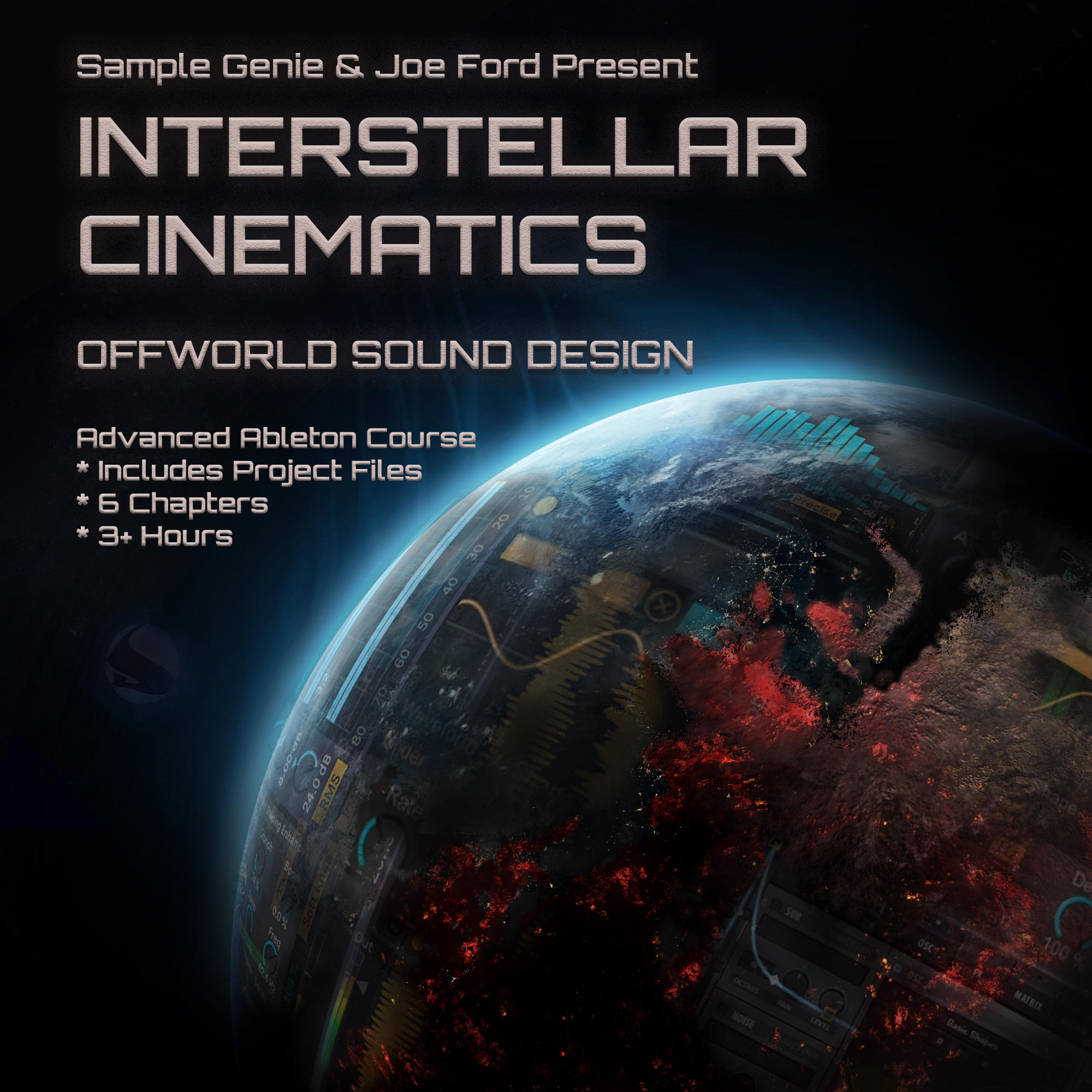Analysis of S7E10: PHACTION – Organic Bass Design
- This topic has 0 replies, 1 voice, and was last updated 4 years, 3 months ago by ,
 Harry.
Harry.
-
AuthorPosts
-
-
2020-04-08 at 03:52:33 #137951,
 HarryModerator
HarryModeratorFirst off, I have fallen behind on both watching videos, and posting timeline notes. The past year has been a busy one for me, and even with the current situation most of us are in, I’m still busy with trying to work full-time, from home, with two young kids and a spouse who is also trying to sneak in work when possible. I think I have a plan for myself to get more of these put together, so initially some of the posts might look incomplete, but I’ll be adding to them as I get through the multiple parts of the tutorials.
—
PHACTION – Organic Bass Design
Season 7 – Episode 10 – 5 partsPart 1 (20:24)
– “Creating bass that is warm, analogue, gritty, full of movement, and brimming with flavour”, one of Phaction’s priorities when making bass.
– The focus of this episode is going to be on bass synthesis, samples, and resampling.04:00 – taking basic samples, namely 808s in this episode, and making them more interesting.
04:15 – looking at his 808 rack/chain in Ableton Live.
05:30 – explains processed samples versus “benign” samples that are not heavily processed, and having more processing possibilities.
06:15 – “less of a synth guy, more of a post processing guy”.
06:30 – the audition hits in this part are mostly one shots.
07:00 – four elements to Phaction’s bass design:
1. Distortion
2. Automation
3. Reverb
4. Something that creates movement07:30 – A/B’s hits with his 808 rack on, and then off.
08:00 – explains his audition process, to A/B the rack.
08:30 – going over distortion chain, starting with the wet & dry layers.
– Explains how he switched his approach from series processing to parallel processing.10:00 – a dry layer is kept, to maintain the low end weight of the sound.
10:40 – explaining headroom, as how it applies to this processing.
11:45 – the chain’s wet layer.
– First plugin is Ohmicide, multi-band distortion, Phaction’s favorite distortion at this time, which he views as a “sledge hammer”, adds nice mid & high range. Actually has two in a row in the rack.
– Also points out that you can automate the bands in Ohmicide with no issues, but trying to automate in Trash2 has aliasing issues. I can confirm I’ve noticed this with Trash2.15:45 – “Trash2 is the razor blade”.
16:30 – next insert is HY-TP2, a free tremelo plugin (link: https://bedroomproducersblog.com/2018/01/11/hy-plugins-tp2/).
19:35 – has two Ohmicides in the chain, likes to find the sweet spot of the sound with the first, retains the settings on the second, and then adjusts, A/B’ing between the two to pick the preferred output. Sometimes keeps both active, if it sounds good.
– Stresses it is important to A/B between processes.—–
Part 200:30 – automation of Ohmicide’s bands 1 and 2, to find the sweet spot of the bass.
02:30 – prefers an exploratory approach vs. a prescribed approach, aiming to find happy accidents. Basically, experiment and see what happens.
03:00 – Trash2 giving top end presence. Feels you need a distortion adding the initial flavor (Ohmicide in this case), and then another more precise unit adding top end.
03:20 – next stage is reverb, good to add in moderation. Does not add to the sub though. And likes the Valhalla reverbs.
05:15 – reverbs can shape tone, not just space.
06:15 – touches on bass processing group.
– Reverb (Valhalla Vintage) –> Multi-band Distortion (FabFilter Saturn) –> Limiter (FabFilter Pro-L)
– Uses Pro-L in transparent mode, has a high attack, 0ms release & look ahead. This is dubbed by some on SG as the “Joe Ford Method”, can be found in his tutorials, and is good for controlling output.
– Saturn is adding a bit of drive.07:50 – reverb as glue, stresses you need to learn your reverb plugins, then you can utilize them effectively.
10:15 – dry/wet chain approach applied to this rack, but reverts to how he had it set originally.
12:00 – getting room size right on the reverb.
12:30 – 808 distortion chain, with an added Saturn to bring up the mids.
13:50 – Boz JST Sidewidener for some imaging/width. This plugin came with Computer Music issue 215 (https://www.musicradar.com/computermusic/free-pc-mac-stereoiser-plugin-sidewidener-616680), or you can buy.
14:40 – demonstrates automation to get different sounds.
15:25 – moving on to U-He Diva, one of his favorite synths.
18:15 – likes finding a patch he likes, and then makes a lot of variations.
— I do this when I’m looking for something to do in the studio.—–
Part 300:30 – Akai LPD8 macro details:
Macro 1 –> Ohmicide 1’s Band 1 amount
Macro 2 –> Ohmicide 2’s Band 1 amount
Macro 3 –> HY-TP2’s depth
Macro 4 –> HY-TP2’s rate
Macro 5 –> HY-TP2’s waveform
Macro 6 –> HY-TP2’s smooth
Macro 7 –> HY-TP2’s on/off toggle (I think?)
Macro 8 –> Valhalla Vintage’s reverb mix amount
– Covers all this around 15:40 on this video03:30 – two Ohmicides running ins series, to provide two key resonant focal points. Says this is more about the principle of the idea, not the exact settings.
05:00 – next plugin in the chain is a reverb.
08:00 – Phaction’s ingredients for an emotion evoking bassline:
1. Sweet progression.
2. The aggression, quality, and flavor of the bass sound itself.10:15 – likes working in the key of E, using E minor.
12:00 – there is a compressor on the dry chain.
13:00 – FabFilter Pro-Q3 has changed Phaction’s approach to mixing, touches on the dynamic controls.
14:45 – using controllers to do automation more by feeling than precision, e.g. drawing automation in with a mouse.
19:45 – encourages to create your own chains.
—–
Part 4– Looking at “Isiah”, out on Metalheadz later this year. Plays the track until about 04:15.
04:50 – bass was bounced out, but Phaction looks at the way the bass was created with Omnisphere and the processing chain.
08:20 – creates a processing chain, and then goes through bass presets to find interesting options.
10:55 – idea for exploring presets: re-save the ones you like, and then tweak and edit them in to variations.
– States that you do not have to initialize a synth to make sounds in to your own, you can take presets and tweak them with parameter changes and different processing chains.
– Uses a patch that is multiple presets layered in Omnisphere.19:00 – on this particular track, them mid-layer is where automation really shapes the bass. There is a high frequency layer as well.
20:45 – crucial to get multi-band layer splits correct. Splits being the crossover points.
22:00 – Kazrog KClip clipper, to give sounds umph. You can download the demo, and it will work even after the demo period ends.
24:45 – OTT compression for the high end.
26:00 – layering is essential to his approach to bass design.
—–
Part 5– Using the same Omnisphere patch, but in a more liquid style track, a more restrained approach. The track is forthcoming on Spearhead, titled “The Fall” and features vocals by Riya. Plays track until about 03:15.
03:30 – same bass, but processed through a different chain.
07:10 – layered a low end bass with the main bass, to recover some of the low end lost by the processing chain.
08:10 – references Joe Ford’s tutorials, using Trash2’s Fuzz distortion.
09:30 – checks mono capability often.
10:05 – audio effect rack with a side-signal chain and a mid-signal chain.
11:50 – likes using legato on the bass, so it bends between the notes.
"Knowledge kept is knowledge lost." - Bobbito Garcia
-
-
AuthorPosts
- You must be logged in to reply to this topic.


